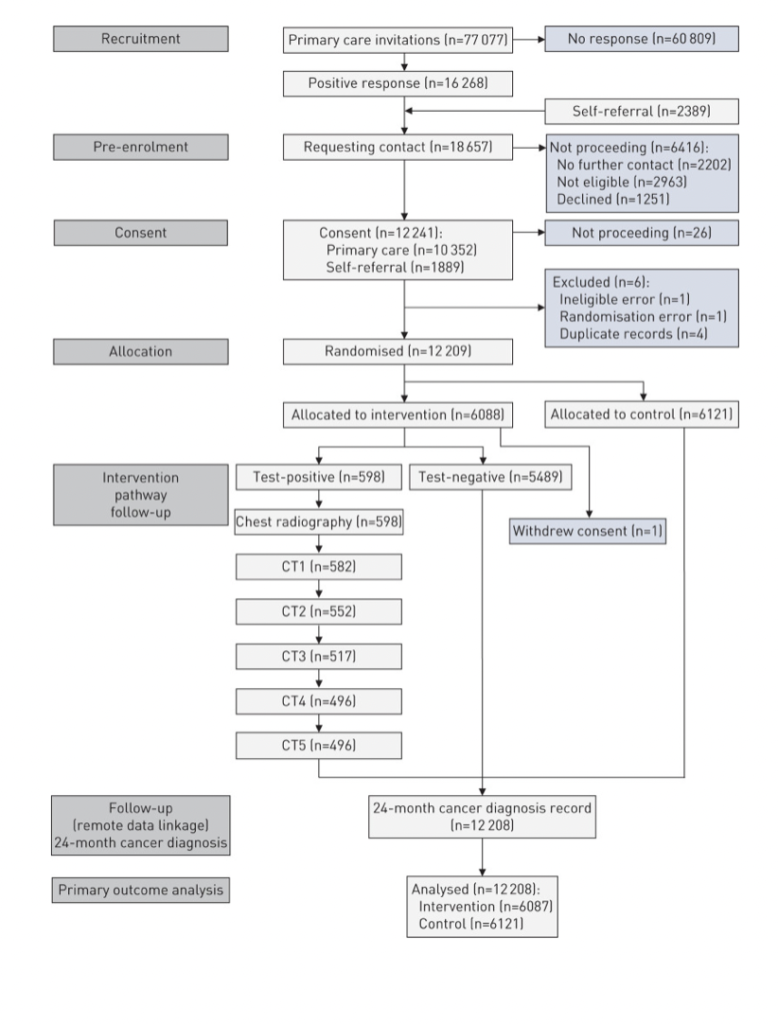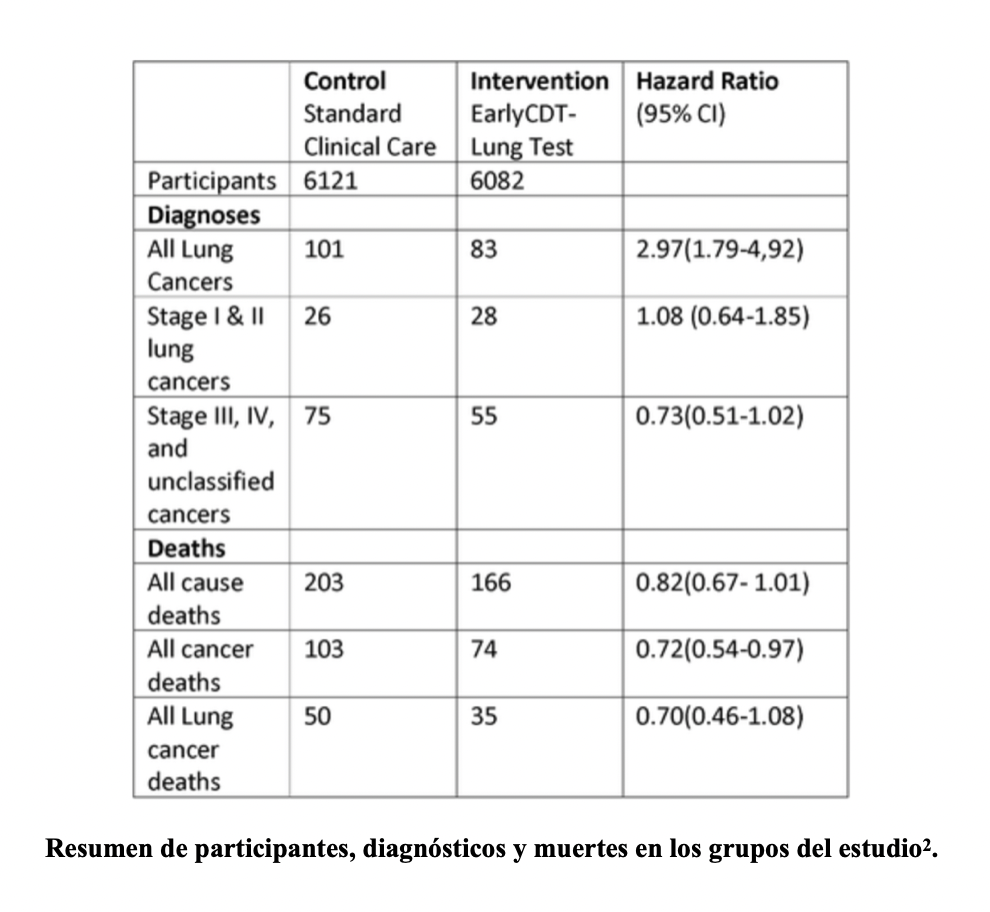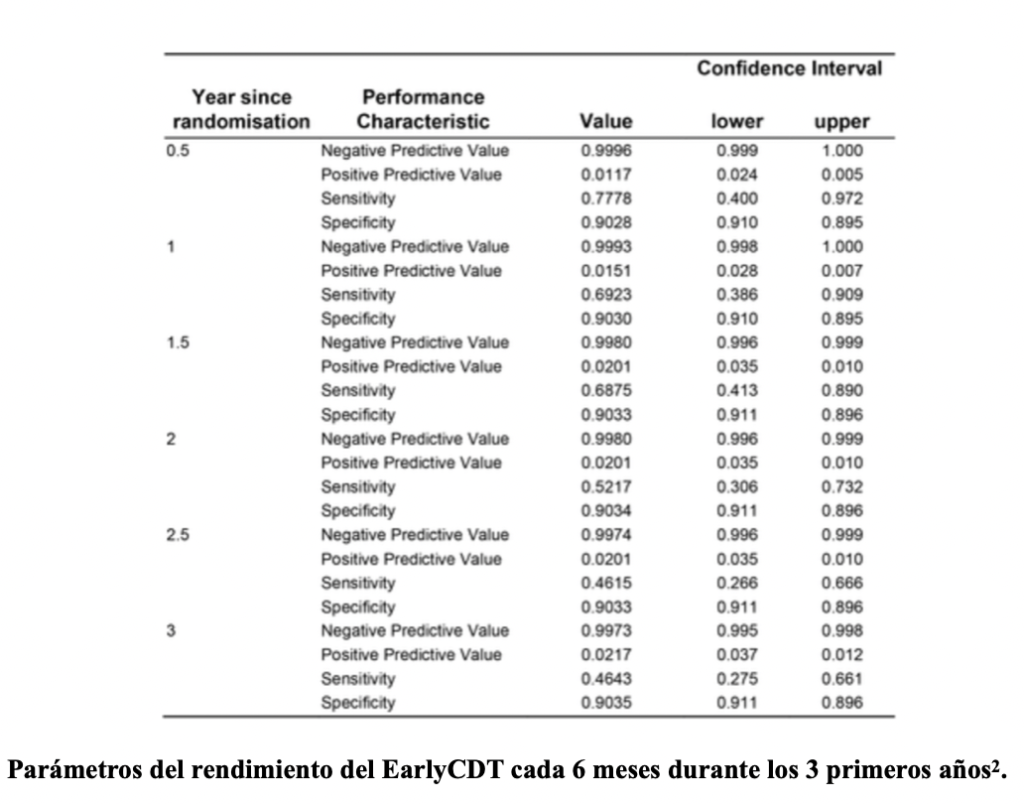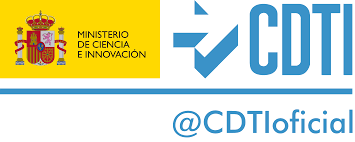The efficacy of EarlyCDT-Lung has been successfully studied in a high-risk lung cancer screening program conducted by NHS Scotland. The randomized ECLS study enrolled more than 12,000 patients. EarlyCDT-Lung was used to stratify at-risk patients selected for further evaluation by low-dose CT.
In the Study group, those patients who tested positive were selected for CT scanning every 6 months, while those who tested negative joined the control group without periodic imaging.

ECLS Study CONSORT flowchart. CT: computed tomography1.
The results of the ECLS 2-year follow-up study were presented for the first time at the WCLC-IASLC annual congress in 2019 and published in early 2021 in the European Journal of Respiratory (ERJ). 2-year follow-up already showed a significant reduction in late diagnosed cases in the study group vs control group and a slight trend in the reduction of overall and lung cancer mortality1. Follow-up at 3 and 5 years is also ongoing. Recently, a preprint has been published with the results of the 3-year follow-up confirming these results in terms of late diagnosis and also showing that the difference in lung cancer mortality between groups is beginning to be statistically significant2.

An interesting finding of the ECLS study is the diagnostic sensitivity of the EarlyCDTÆ-Lung test, which reaches values of over 70% (at 6 months follow-up) in cancers detected early, but decreases drastically in cancers detected in advanced stages1,2.

The researches’ hypothesis is that the decrease in the test’s autoantibody signal may be due to the cancer learning to evade the immune system as it progresses. In fact, a new application of the test to look at responders and non-responders to immunotherapy is already being investigated.
The EarlyCDTÆ-Lung test has also started to be used in another screening program in the UK, iDx Lung3, which uses this new multimodal approach combining low-dose CT with the use of biomarkers, in this case after the CT scan, to stratify the risk of malignancy of detected Indeterminate Lung Nodules.
El test EarlyCDTÆ-Lung, también se ha comenzado a utilizar en otro programa de cribado que se realiza en UK, iDx Lung3, en el que se plantea este nuevo enfoque multimodal en el que se combina el TC de baja dosis con el uso de biomarcadores, en este caso de forma posterior al TC para estratificar el riesgo de malignidad de los Nódulos Pulmonares Indeterminados detectados.
References
- Sullivan et al (Early Diagnosis of Lung Cancer Scotland (ECLS) Team). Earlier diagnosis of lung cancer in a randomized trial of an autoantibody blood test followed by imaging. Eur Respir J. 2021 Jan 14;57(1):2000670. https://erj.ersjournals.com/content/57/1/2000670.long
- Sullivan et al (Early Diagnosis of Lung Cancer Scotland (ECLS) Team). Targeted screening for lung cancer with autoantibodies. medRxiv. 2021 (Preprint*) https://www.medrxiv.org/content/10.1101/2021.08.17.21262105v1.full
- https://www.southampton.ac.uk/ctu/news/2021/06/11-researchers-pilot-new-tests-for-early-detection-of-lung-cancer.page.
* This article is a preprint and has not been peer-reviewed [what does this mean?]. It reports new medical research that has yet to be evaluated and so should not be used to guide clinical practice.








